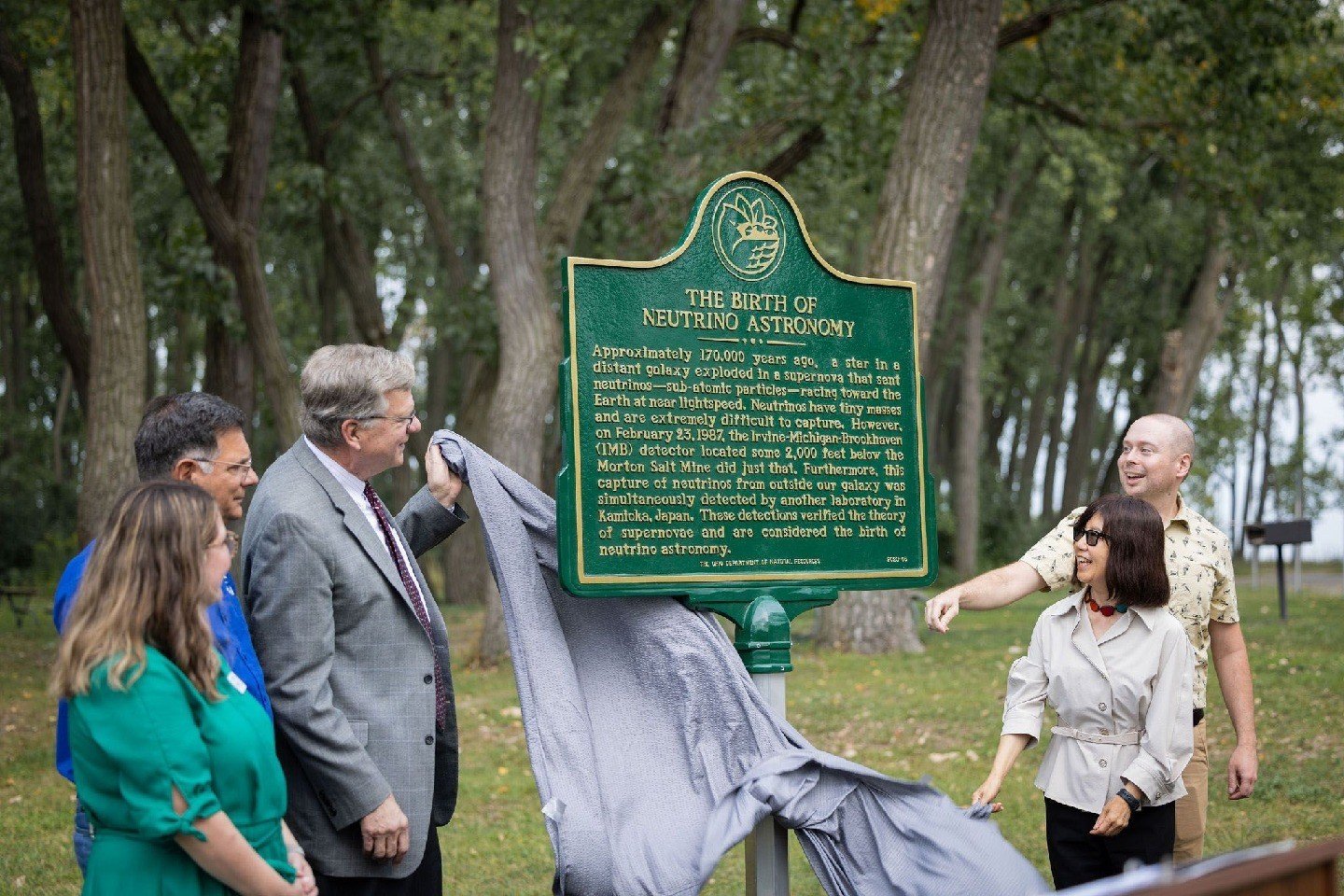American Physical Society Recognizes the Morton Salt Mine as a Historic Site
The site was home to the world’s first kiloton-scale underground neutrino observatory.

Each year, the American Physical Society recognizes significant landmarks in physics history through its historic sites initiative. In a ceremony on Aug. 27, the Society designated the Morton Salt Mine in Painesville, Ohio as the latest historic site in recognition of its importance as the home of the Irvine-Michigan-Brookhaven detector, the world’s first kiloton-scale underground neutrino observatory.
“IMB was not only instrumental in initiating the global search for proton decay, it also helped launch the field of neutrino astronomy,” said APS President Young-Kee Kim. “We’re excited to formally recognize the Morton Salt Mine as a historic site and to highlight the incredible scientific achievements that were made there.”
Located nearly 2,000 feet underground in the Fairport Harbor Morton Salt Mine, IMB was an 8,000 ton Cherenkov detector — a device able to spot a form of electromagnetic radiation that is used for particle identification — that operated between 1982 and 1991. While it was initially built to look for proton decay, the hypothesized break-down of protons or neutrons into subatomic particles, IMB’s landmark discovery came from its ability to detect neutrinos, subatomic particles generated by powerful cosmic events, from Supernova SN1987A.
A few hours before the supernova’s visible light reached Earth on Feb. 23, 1987, the IMB and two other detectors spotted neutrinos from SN1987A. While theoretical models had predicted that supernovae would produce vast amounts of neutrinos, this was the first time that neutrinos from a supernova were measured directly. Not only was this a unique discovery, as these types of supernovae are incredibly rare, these measurements became the starting point for the field of neutrino astronomy, where scientists study neutrinos and other subatomic particles to learn more about the nature of the universe.
“We are honored that this historic location is being recognized by APS,” said Rep. Bill Foster, a former Fermilab physicist who was involved with the design and construction of IMB and a member of the team that detected neutrinos from SN1987A. “We are proud of the discoveries that were made by IMB and the role that the Fairport Harbor Morton Salt Mine has played in the history of physics. We hope that this designation can help inspire our nation’s next generation of scientists.”
- APS Press Office
- media@aps.org